In our modern world, nothing feels as unreal to us as death. Our sanitized culture carefully shields us from its stark reality. The body, once the vessel of a loved one’s presence, is whisked away by the coroner, hidden from view, and prepared by morticians with chemicals that mask the most natural truth of death: the inevitability of decay. At the wake, mourners encounter a carefully preserved form, insulated from decay, offering a farewell without truly confronting death's raw reality.
The Historical Reality of Death
For most of history, however, death was impossible to avoid or obscure. To live long enough was to witness it, unmediated and undeniable. The presence of a deceased body—a neighbor, a loved one—testified not only to the fragility of life but to the inexorable process that follows its end. To behold the dead was to know the truth of human mortality, which begins with the cessation of the delicate harmony that sustains the body. With the cessation of life, the body begins to reveal its fragile nature, unraveling in a series of transformations that bear witness to its transient state, reminding us that the dissolution of the physical form is an inevitable part of the human condition, one that begs us to seek meaning beyond the material. As the body succumbs to its fate, it undergoes a series of changes that strip away all semblance of humanity, revealing the stark physical reality of death—an unfiltered process that we now explore in detail.
The Process of Decay
After death, the body begins to undergo a series of changes almost immediately. Deprived of oxygen, cells begin to digest themselves, as enzymes break down cell membranes and release their contents into surrounding tissues. Within hours, the body's systems turn inward, dismantling what they once sustained. Rigor mortis sets in, as calcium accumulates in the muscles, causing temporary stiffness. Soon after, putrefaction begins as bacteria from the gut multiply, feeding on tissues now bereft of defenses. Gases accumulate, bloating the body and discoloring it in areas along the blood vessels, creating a marbled pattern.
By the second day, the odor of decay becomes unmistakable, as proteins break down into sulfur compounds. The skin blisters, loosens, and peels away, while bodily fluids seep into the surroundings. Insects, drawn by the scent, accelerate the breakdown of flesh.
For most of history, the only barrier to the smell of putrefaction was a block of ice, if available, and the hope that the funeral could be completed before the body lost all resemblance to the person once known. At such times, the only sign that this inevitable reality was transcended by some higher reality was if the body of a holy person completely failed to undergo corruption. Such bodies in the Eastern Orthodox tradition as well as in Catholic tradition are called incorrupt, and this incorruption is seen as a sign of sanctity. This is why, in The Brothers Karamazov, Alyosha is so deeply shaken when Father Zossima begins to stink. He longed for a definitive sign of sanctity—a body that remained incorrupt, a manifestation of holiness that transcended death. But the odor emanating from Father Zossima’s body served as a humbling reminder that sanctity cannot be confined to our desire for visible, miraculous signs. The holiness of a person may not always conform to our expectations; it is often found in the subtle, unseen workings of grace rather than in dramatic proofs.
Father Zossima’s body did not remain incorrupt—not because he lacked sanctity, but perhaps as a rebuke to the naïve expectations of those around him. It is a reminder, stark and humbling, that holiness cannot always be measured by the miraculous signs we wish for. Instead, it often dwells in places we fail to notice, in a sanctity that resists our desire for easy certainties.
The Miracle of Incorrupt Saints
This brings us to several remarkable examples—saints whose bodies defied the decay that claims us all. These holy ones, whose remains bore witness to something beyond the natural, remind us that even in death, there can be a sign of divine grace that stands against the inevitable stench and dissolution. These bodies, untouched by decay, stand as powerful symbols of hope—of a sanctity that speaks to the potential for transcendence even in the face of our mortality.
Notable Examples of Incorrupt Saints in Eastern Orthodoxy
1. St. John of San Francisco
St. John of San Francisco, also known as St. John Maximovitch, is a remarkable example of incorruption in modern times. His body was discovered to be incorrupt after being exhumed, and his relics continue to be a source of healing for the faithful. Known for his deep humility and relentless dedication to prayer, St. John was said to have slept only two hours a day, spending the rest of his time in prayer and service. His lifestyle is significant in Orthodox spirituality as it reflects the ascetic ideal of self-denial and continual communion with God, demonstrating the transformative power of prayer and devotion. He often walked barefoot, embodying the role of the holy fool. His presence was so powerful that even hardened criminals would break down in tears when he passed by their cells. Though his speech could be difficult to understand, those who knew him realized that what seemed like a lapse in coherence often turned out to be prophecy—fulfilled in the lives of those around him.
2. Archbishop Dimitri (Royster) of Dallas
Archbishop Dimitri of Dallas offers another example of holiness whose incorrupt body continues to inspire the faithful. Known for his gentle nature and humility, he was deeply loved by his community. His life was marked by quiet dedication to God, and it was only after his passing that many began to see the depth of his sanctity.
Archbishop Dimitri passed away in 2011, and his body was found incorrupt in March 2016 when it was disinterred from a damp tomb to be re-entombed in St. Seraphim Cathedral. Archimandrite Luke, who was present at the discovery of Archbishop Dimitri’s relics, said the body was found in a damp and musty place. A local specialist who was hired for the exhumation process was absolutely shocked when he saw the relics, since he knew that the particular area where Archbishop Dimitri had been buried was most conducive to decay.
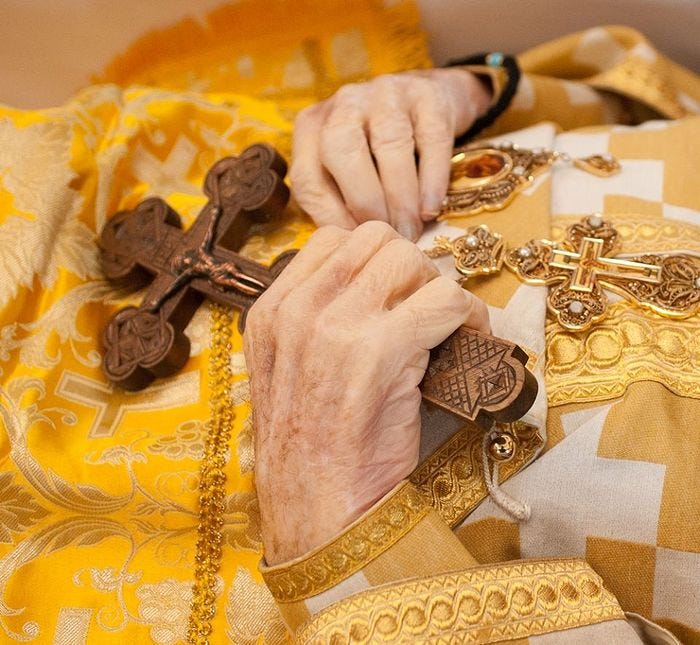
3. St. Mardarije of Libertyville, Illinois
St. Mardarije, who reposed in Libertyville, Illinois, is another modern example of incorruption. He was a bishop who worked tirelessly in the early 20th century to establish Orthodoxy in America, facing numerous challenges and hardships. Many years after his death, his body was exhumed to be re-entombed in a new location. During the exhumation, part of the coffin cracked, and a sweet aroma filled the room. To everyone's surprise, his body was found incorrupt. Before being washed, St. Mardarije's body appeared almost unchanged, with his hair and skin still intact. After the customary cleaning ritual for an incorrupt saint, his body took on a darker amber hue—a common occurrence in such cases. His relics are now venerated by many, including myself during my visit. Seeing them was a profound reminder of the transformative power of God's grace.
Conclusion
The incorrupt saints in America remind us, even as much as the sight of them may be frightful to the average Westerner, that Grace can even enter and transform matter. Sanctity is not confined to the past but is a present reality that touches our lives today. These holy figures challenge our modern detachment from death and decay, calling us to reflect on how even in death there can be evidence of Life. They serve as powerful symbols that holiness, through God's grace, can transcend the natural decay we all face. Just as the historical confrontation with death once forced individuals to face their mortality, these incorrupt bodies remind us that there is more to existence than what we see—offering a glimpse of the resurrection. Not all saints are incorrupt, but when God allows his deifying energies to transform the material fabric of reality, the trace of this activity lives on in the incorrupt offering us witness from beyond the grave that “Christ is Risen from the dead trampling down death by death and upon those in the tombs, bestowing life.”

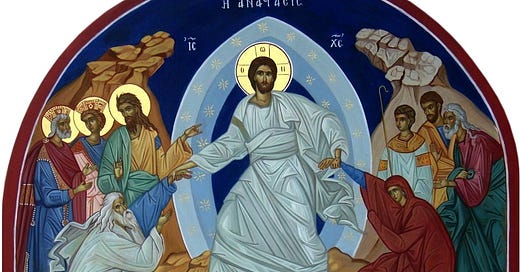



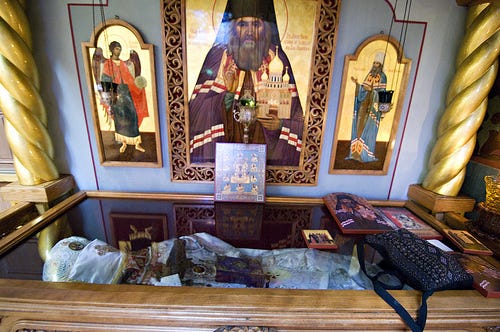
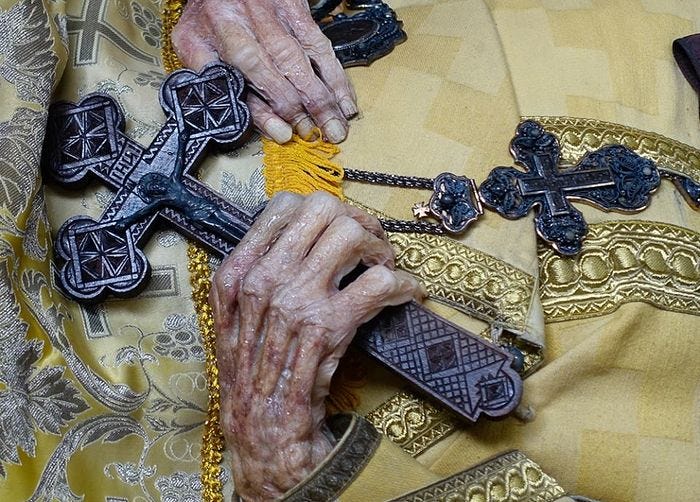
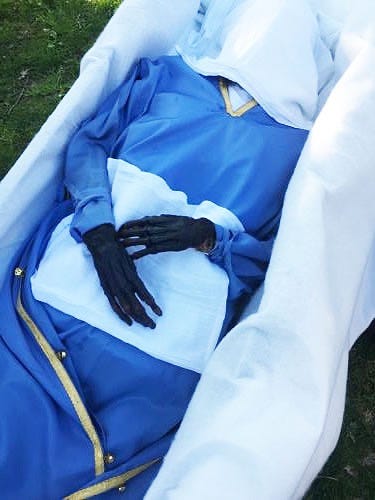
What is the scientific explanation behind these phenomena?